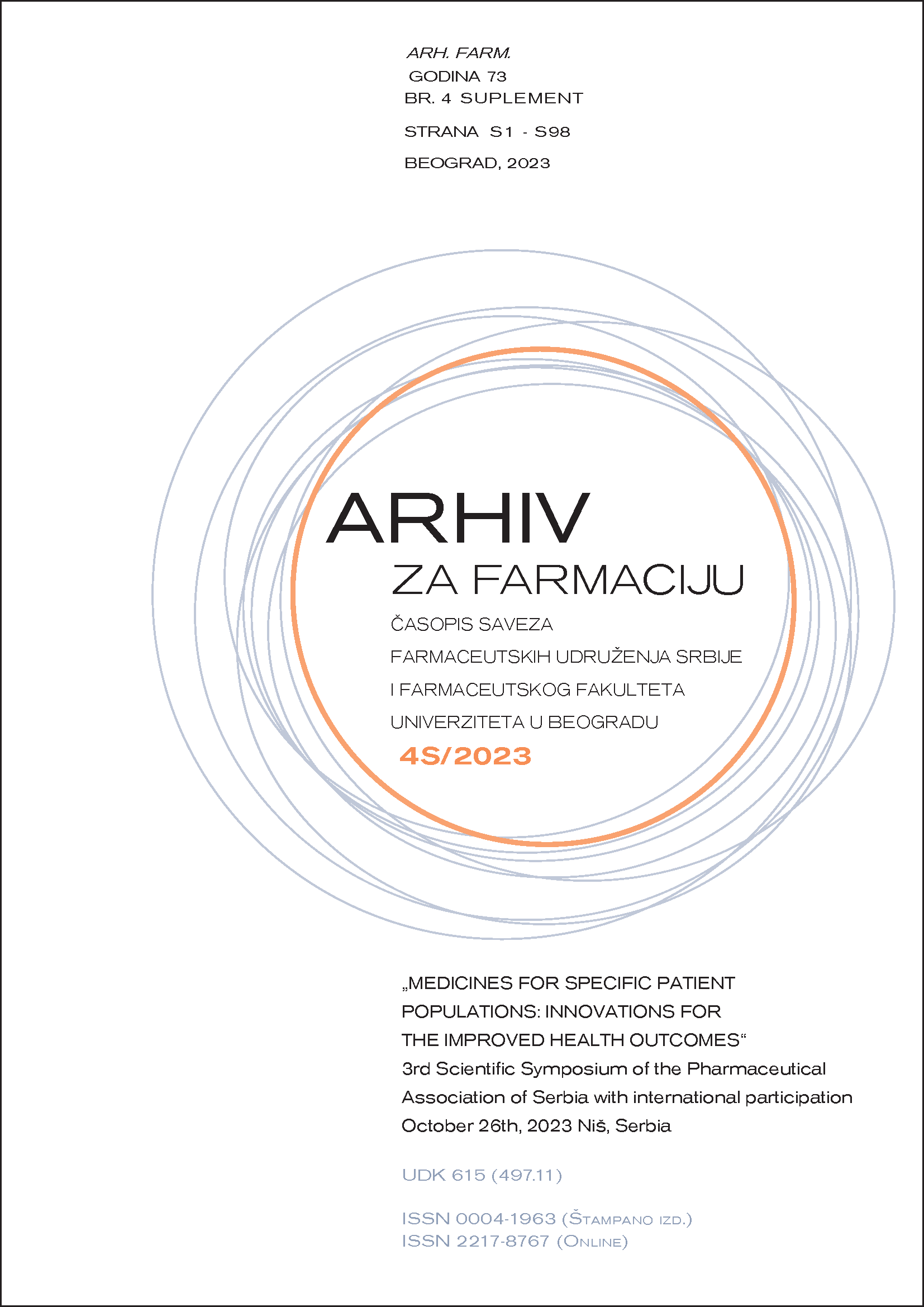RETINYL-PALMITATE AND BETA-CAROTENE CONTENT IN LIQUID ORAL PHARMACEUTICAL DOSAGE FORMS
Abstract
Retinyl-palmitate (RP) is a synthetic form of vitamin A while beta-carotene (BC) has provitamin A activity. They are often used in dietary supplements for children and adults because of their physiological roles in the humans. The presence of other active substances and excipients are making their analysis more complex (1). The aim of this research was to develop a sample preparation procedure for simultaneous HPLC determination of these two bioactive compounds in pharmaceutical syrups. Chromatographic separation was performed on the Restek Ultra IBD C18 column at 30⁰C. The mobile phase consisted of acetonitrile:dichloromethane:methanol=7:2:1 (v/v/v) in isocratic mode. UV detection was conducted at 325 nm for RP and 455 nm for BC. Samples were prepared by using solid-phase extraction on a cartridge type HR-P (Macherey-Nagel). The developed extraction method and selected HPLC conditions enabled selective determination without interferences from the excipients. The mean retention time of retinyl-palmitate was 5.50±0.05 min, while for beta-carotene it was 5.06±0.03 min, which indicates that the samples can be analyzed in a very short time. Multivitamin syrup for children and syrup for smokers were analyzed. The latter contains both retinyl-palmitate and beta-carotene, while the syrup for children does not contain beta-carotene. The found contents of RP and BC in syrup for smokers were 3.1±0.03 mg/100 mL and 2.3±0.08 mg/100 mL respectively. The content of RP in syrup for kids was found to be 4.45±0.27 mg/100 mL. For both analyzed pharmaceutical syrups, the found concentration of these two vitamins corresponded to the content declared by the manufacturers.
References
1. Vilchez C. et al. Marine Carotenoids: Biological functions and commercial applications. Marine Drugs. 2011;9(3): 319-33

